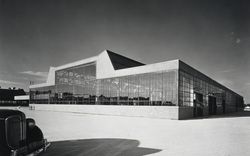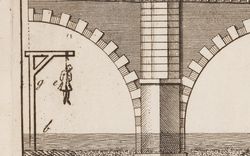Toys Shape Minds no. 16
Text by Norman Brosterman and Michael Lewis
The Log Cabin Play-House commemorates one of the United States’ most powerful architectural icons, the humble log cabin in which Abraham Lincoln was born. During the 1860s, especially after Lincoln’s assassination, the rustic cabin took America’s popular imagery by storm, saturating advertising, art, and children’s books. Joel Ellis was a Vermont manufacturer of toy wagons and carriages who began making the log cabin in 1862, just after the start of the Civil War. His notched logs, joined at the corners, make the walls of the house, and gaps are left for the painted-tinplate window shutters and door. Here is the forerunner of John Lloyd Wright’s famous Lincoln Logs of 1917, which improved on Ellis’s rather crude toy by dispensing with the concealed wires that held the blocks in place.
The box cover hints that the Log Cabin Play-House was more than solely a boy’s building toy. Shown playing with the blocks is a dainty young girl, perhaps suggesting that Lincoln’s log cabin was an inspiration for all children. But more likely Ellis was shrewdly merchandising a set that offered both a building toy for boys and a doll house for girls, doubling his potential market. Lincoln was venerated, but then so were sales.
The Log Cabin Play-House was displayed in Potential Architecture, one in a series of exhibitions we developed during the 1990s exploring the relationship between toys and architecture. This text originally appeared in the accompanying publication. We have a significant number of toys and games in our collection.
















